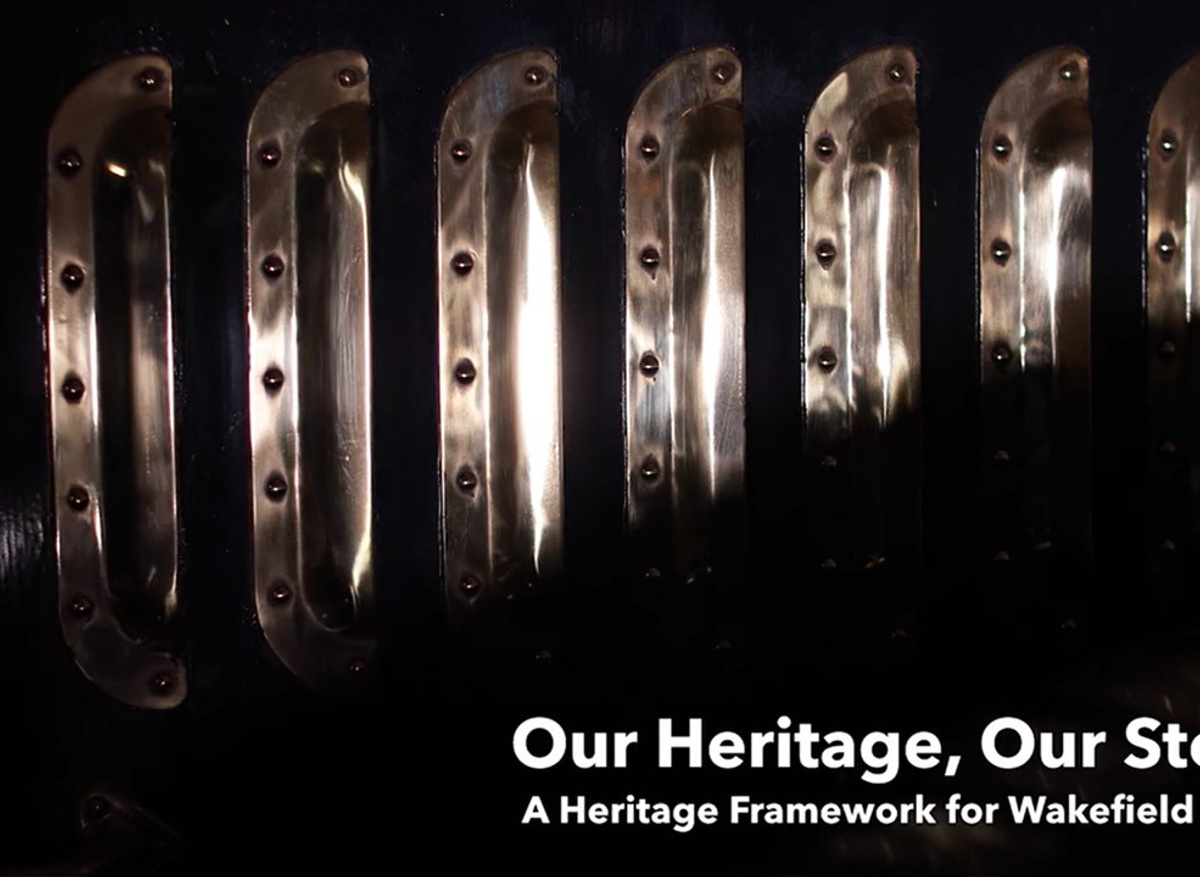I have recently moved across the West Yorkshire border to start a new role in Wakefield Council as their new Heritage Development Manager. It’s exciting times for heritage in Wakefield, as the council have just launched their new heritage framework, developed with community partners across the District [include hyperlink]. Since qualifying as an archaeologist over 20 years ago, I’ve been lucky to work for a number of great councils across Yorkshire, running a variety of different heritage projects. My job title hasn’t included the word archaeology for most of that time, but my job has always involved working with either built, buried or intangible heritage, and working with local communities to explore, celebrate and protect that heritage in different ways.
In my first few weeks in Wakefield I’ve been getting to know my new patch, which includes some amazing archaeological sites and collections. I’ve visited the small but mighty Castleford Museum (run by Wakefield Museums) which has some stunning Bronze Age and Roman objects on display, along with objects and stories relating to local industries and, of course, rugby league! I was particularly taken with the witch globes, and a 1903 glazed bowl with its cheerful Christmas message to Amelia Hartley in Stanley.
I’ve been to Pontefract Museum to see their women in industry exhibition, and to find out more about Pontefract’s unique liquorice and sweet-making heritage, along with the town’s important medieval history, and the first secret election ballet box from 1872. The museum is also housed in a former Carnegie Library art deco building, which is beautiful inside and out. It’s worth popping in just to marvel at the tiles.
After the museum I called in to Pontefract Castle (only a few minutes down the road) which is another amazing site. Over the years the castle dungeons have been used as a wine store, a prison for Civil War prisoners - many of whom left their mark in the stonework - and even a liquorice root store. Where else could you say that? The castle has also just been awarded heritage green flag status, and you can immediately see why. There has been a lot of biodiversity planting in recent years, and the castle also boasts a well-stocked medieval herb bed created by local volunteers. The potential for heritage sites to support biodiversity is something we will be exploring more through the new Heritage Framework.
What’s better than one castle? Two castles, of course! I’ve also been to Sandal Castle this week, to see the innovative new ‘healthy hedgerows’ artwork created by local primary school pupils working with Wakefield Museums and artist Aprille McShane. Again, this work brings together heritage and biodiversity in a creative and inspiring way, as well as engaging young people in how the stories of their historic places are told and celebrated, something the Heritage Framework will continue to actively support over the next few years.
With its soaring views of Wakefield City Centre, you can see why Richard III chose Sandal as his northern base. His polygonal tower is still visible, along with the iconic ruins of the Bailey that are a well-loved Wakefield landmark. Apparently, in the 20th century the entrance to the castle was flanked by two whale jaw bones, although where they came from (Wakefield is notoriously land locked) and where they went to, is a mystery lost to the mists of time.
As well as exploring the archaeology of the District over the past few weeks I’ve also met with some of Wakefield’s great civic societies, historical societies and friends groups. I’ve had the privilege of visiting some fantastic new community-led heritage projects, and I’ve met with colleagues across the council and at other major heritage sites like the National Coal Mining Museum for England and Nostell to talk about future priorities. It’s always a privilege to talk to people who are so passionate about what they do, and to be able to start planning some exciting projects to support local communities in exploring and celebrating their heritage and historic places.
So, it’s impossible to describe an average day in my job – every day is different, but as with most archaeologists, the work I do is varied, vibrant and full of amazing people and places.
Watch this space for more exciting things from Wakefield over the next few years, and if you fancy exploring some great archaeological sites and collections, do come for a visit!




